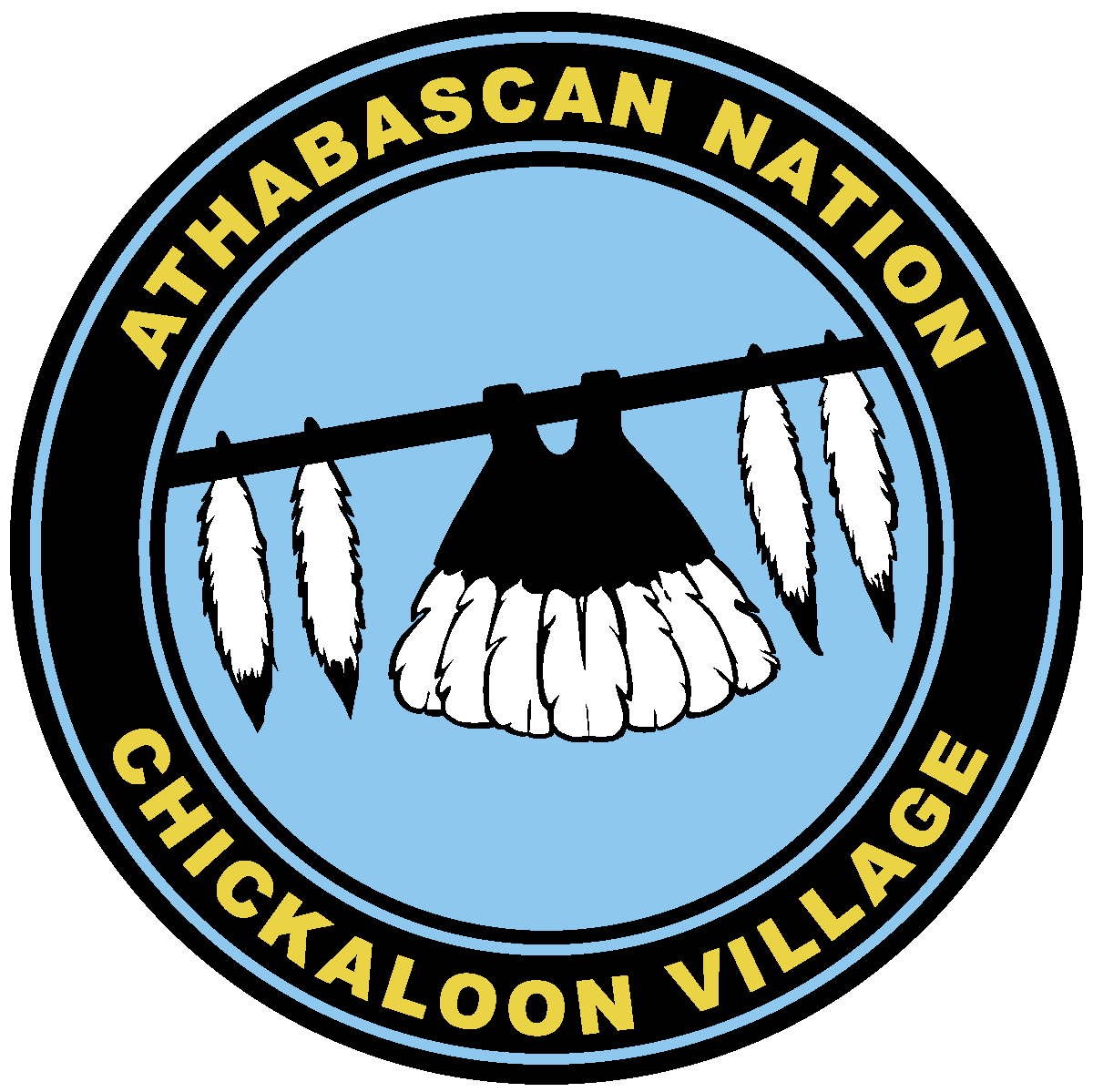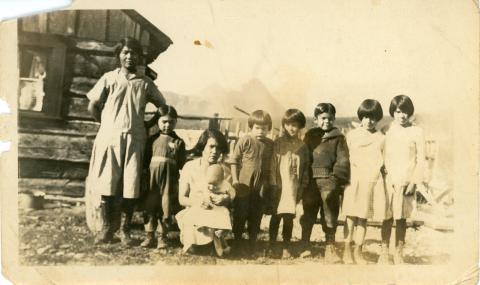Johnny Howard and Angie
Print Photograph, 2 1/2 in. x 3 in.
Reverse of Print: Handwritten inscription in ink, "Johnny Howard and Angie [Angeline Harrison], Chickaloon Railroad Warehouse." Attached to Print: Handwritten inscription in ink, "The only thing left up Chickaloon when they pulled the rr tracks. Just a little warehouse & grandpa's house that burned down."
The development of the Alaska Railroad had a profoundly negative impact on Alaska Native Peoples. While it was promoted as a means to connect communities across the state, its construction brought an influx of non-Native populations, led to the destruction of thousands of acres of untouched land, introduced pollution to previously pristine areas, and, in some regions, diverted waterways—disrupting vital salmon habitats and threatening a key subsistence resource for Alaska Native communities. These environmental and cultural disruptions significantly affected the Ahtna way of life, and their enduring legacy continues to shape the mission of the Tribe’s Environmental Stewardship Department, which remains committed to addressing and repairing this damage.
The Matanuska watershed holds deep cultural significance for the Ahtna Dene. Once a rich and vibrant region, it provided an abundance of salmon, moose, and sheep, and served as a gathering place where the Ahtna met and traded with the Dena'ina. Elder Alberta Stephan recalled that the ancestral trail system near the Chickaloon River was so heavily used by Ahtna travelers that it became worn three feet deep into the earth.
The 1913 Nelchina gold rush brought a surge of non-Native travelers through the Matanuska Valley and led to the expansion of the ancestral Nay’dini’aa Na’ Kayax trail. In 1917, the federal government funded the construction of a railroad that followed this trail system, running parallel to the Matanuska River for approximately forty miles. Along with the railroad came stations, spurs, federally supported coal mines, and new settlements—all of which contributed to the widespread loss of irreplaceable cultural resources, sacred sites, and traditional knowledge.
By 1925, at least two Tribal village sites and many miles of the Nay’dini’aa Na’ Kayax ancestral trail had been destroyed, along with several salmon spawning grounds critical to Ahtna subsistence. Though much of the railroad in the Matanuska watershed was eventually abandoned by 1930, the damage to Ahtna cultural landscapes remains.
Family Genalogy:
Angeline (Angie) Harrison (born on September 26, 1926, in Chickaloon, Alaska, and died on December 24, 1989 in Anchorage, Alaska) was the daughter of Annie Nikolai and her second husband, Leland (Lee) Harrison.







